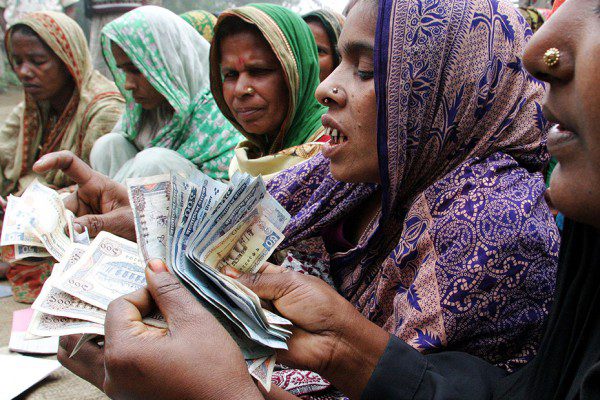Baiju Gupta of Chilika Dand gram panchayat on Singrauli district of Madhya Pradesh has seen a lot. He must have. After all, he is 105 years old.
“When I came here in 1978, displaced by NTPC’s (‘National Thermal Power Corporation’) thermal power plant, there was thick forest in the area. There was wildlife right here next to the road, at twelve in the afternoon. People came to hunt here. Today it’s all gone.” It sure has. The environment here has been ravaged. What exists is a stark reminder of a green past.
The Singrauli region, spread across the states of Uttar Pradesh (Sonebhadra district) and Madhya Pradesh (Sidhi and Singrauli districts), is India’s energy capital. But as a recent fact-finding team from Greenpeace found, “The landscape of the region today appears to have been overcome by an energy juggernaut, an overwhelming and advancing force that crushes any other manner in which the region can be approached or understood.”
Environment here has been thrown to the winds. The voices of the people of Dibulganj village in Sonebhadra district, like that of many others, remain unheard.
Ram Chandra Verma, whose family resides in this village, says “Earlier we could sleep on the terrace but it is just not possible now. If you put a white sheet on the bed at night, in the morning it is layered with black. This problem increases during the night and has become more severe since 2007, when the Lanco thermal plant was established in the area.”
The plant in question is the second thermal power plant near Dibulganj. The first was the 1630 MW ‘Anpara Thermal Power Plant’, which is state-owned and forced the village to be displaced to make room for its construction. The land next to Anpara plant was originally acquired for its expansion, but later handed over to a private company for the construction of a 1200 MW plant by Lanco. This newer plant is even closer to the village than the first one.
When the fact-finding team visited Belwada village, they saw breakages in the pipeline, in various places, en route from the power plant to the ash pond. The ash from the pond has contaminated ground water and destroyed the fertility of what remained of the agricultural lands. Indian coal is known to have high ash content and low calorific value( Heat output per Unit of coal) , qualities which lead to a huge amounts of coal ash being produced by the coal-fired power plants. This ash is known to be toxic and have serious environmental impacts.
Hardeo Singh, a resident of Belwada, speaks of the tribal population in the village, which depended on the forests for their livelihood and so lost their livelihood after the ash pond was built. Pointing to the forests beyond the ash pond, he talks of the supplies of ber, amla, chironji, tendu and mahua that they used to sell. “Ab to bas ped hai , phal nahi hote,” he says. Now there are only trees, there are no fruits on the trees.” Life indeed is fast disappearing.
All promises – made by authorities – have not been kept. Jobs, roads, health care and education facilities remain distant dreams. “Everything has finished because of the ash pond and now no local people are employed by the company,” says Harijan, a resident of Belwada village. “Earlier there were fish in the village ponds, now there are no fish. Now there is nothing. There are poles for electricity but no electricity. When [the company] acquired land they promised us roads, schools, electricity – all of this, but nothing came.”
Dissent invariably is met with brutality. Many villagers here say that cases have been registered against them in the local police station, after they protested against the company and demanded employment. Close to 100 people here have been booked under the Goonda Act.
The anger is palpable, and simmering. Udaisiya, a man in his forties, says, “All our wells were drowned by this ash pond and now we have no drinking water source. We have to drink this contaminated water. Our cattle are dying drinking this water, now our children will also die…they can now drop a bomb in this place and kill all of us. Why should we live like this?”
Environmental degradation takes its toll on health. No one knows this better than Dr RB Singh, a surgeon and senior medical officer who has been practicing in the district hospital for the past 22 years. He speaks of a “high instance of pollution in the area, which is the prime reason for the increased incidents of allergy, asthma, bronchitis, malaria, typhoid, diarrhoea, tuberculosis, silicosis and chronic skin diseases like atopic dermatitis, psoriasis, fungal infections etc.”
Singh points out, “There is slow poison in the region, which is killing the people. If the government wants to keep exploiting the resources in this region, then they should remove people from here and only have industries. That will at least prevent the people from suffering.”
A report by the’ Central Pollution Control Board’ (CPCB), the ‘National Institute of Hydrology’ (NIH) and the ‘Pollution Control Research Institute’ (PCRI) of ‘Bharat Heavy Electricals Ltd’ (BHEL) clearly indicated ground water pollution in the Singrauli region on account of coal mining. But the report is gathering dust somewhere. Poisonous dust, if you may.
In all villages in the proximity of the coal mines and/or thermal power plants, residents complain not only of health problems, but also of a complete lack of access to health facilities. Many women tell you heart-wrenching stories of being shunted between the local health facilities and the NCL (‘Northern Coalfields Limited’) Nehru Hospital, which didn’t always accommodate them. Salt is being rubbed into their wounds every single day.
As a consumption-driven Shining India thirsts for more energy, there are people who are paying for it with their lives. The people of the Singrauli region, are one such instance of extreme exploitation and apathy.














